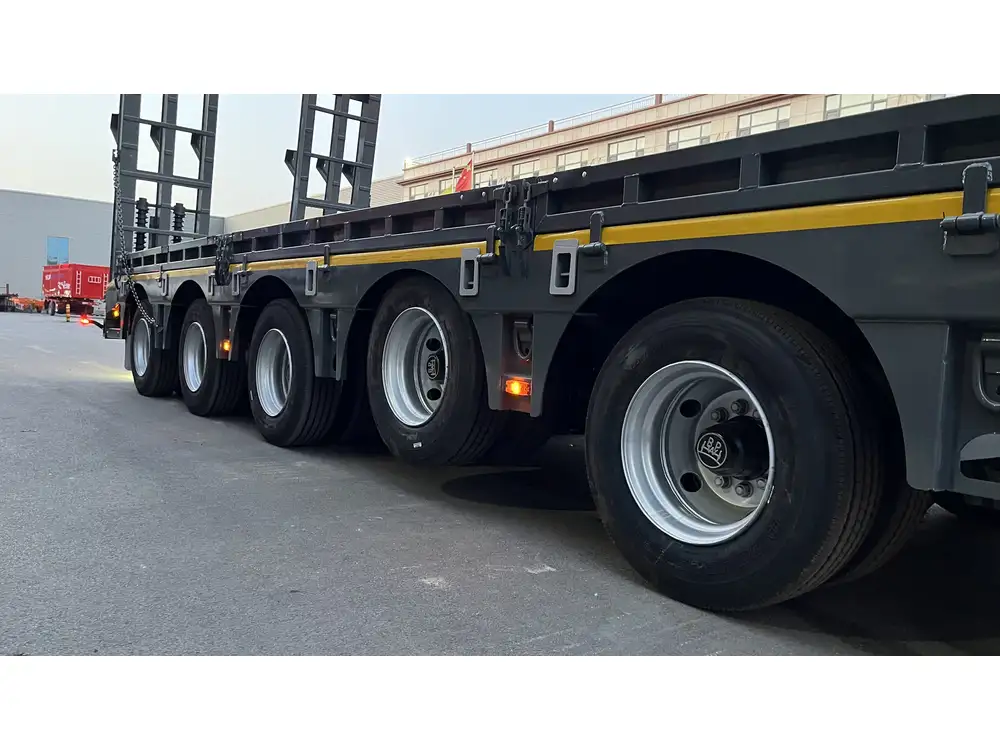Introduction to Stake Pockets in Dump Trailers
Dump trailers are essential for transporting materials in various industries, including construction, landscaping, and agriculture. At the heart of their utility lies a component often overlooked—stake pockets. These pockets, typically located at the sides of the trailer, provide anchor points for securing stakes, enhancing the trailer’s load capacity and stability. However, over time, they may become damaged or corroded, necessitating replacement. This guide details the process of replacing dump trailer stake pockets effectively.
Understanding Stake Pockets
Before delving into the replacement process, it’s crucial to understand what stake pockets are, their types, and their functions.
Definition: Stake pockets are rectangular or square openings in the side rails of a trailer designed to accommodate wooden or metal stakes.
Types:
- Flush Stake Pockets: These are level with the trailer’s surface, providing a seamless look.
- Raised Stake Pockets: Positioned above the trailer’s rail, they facilitate easier stake insertion and removal.
Functions:
- Provides vertical support for cargo
- Enhances tie-down points for securing loads
- Assists in meeting safety regulations

Identifying the Need for Replacement
Recognizing the signs of damage or wear is the first step. Some indicators include:
- Rust or Corrosion: Visible signs of degradation can lead to structural failure.
- Cracks or Breaks: Physical damage reduces the pocket’s load-bearing capacity.
- Misalignment: If the pockets have shifted, they may no longer securely hold stakes.
- Wear and Tear: Over time, constant use can wear down the edges, compromising their function.
Preparing for Replacement
Before beginning the replacement process, gather the necessary materials:
| Materials Needed | Description |
|---|---|
| New Stake Pockets | Choose high-quality steel or aluminum options for durability. |
| Welder | A MIG or TIG welder for seamless integration. |
| Grinder | For preparation of the old pocket area. |
| Safety Gear | Gloves, goggles, and a face shield to protect against sparks. |
| Measuring Tools | Tape measure and level for accuracy. |
| Paint / Rust Inhibitor | For finishing touches to prevent future corrosion. |
Step-by-Step Guide to Replacing Stake Pockets

Step 1: Safety First
Ensure you are wearing all appropriate safety gear. Working with tools and welding equipment can be hazardous; follow all safety protocols.
Step 2: Remove the Damaged Stake Pockets
- Inspect the Existing Stake Pockets: Use a flashlight to examine the extent of the damage.
- Cut Out the Old Pockets: Utilize a grinder to carefully cut out the damaged stake pockets.
- Ensure you leave enough material around the edges for the new pockets to attach securely.
- Clean the Area: Remove any debris, rust, or paint. A clean surface is essential for proper welding.
Step 3: Prepare the New Stake Pockets
- Measure the New Pockets: Compare them with the old ones to ensure a perfect fit.
- Adjust as Necessary: If the new pockets are larger or smaller, you may need to modify the surrounding area for a snug fit.

Step 4: Welding the New Stake Pockets
- Align the New Pockets: Position the new stake pockets in place and ensure they are level.
- Tack Weld in Place: Apply small tacks at each corner to hold the pockets steady.
- Complete Welding: Go around each edge, ensuring that the welds are solid and penetrate deeply to ensure durability.
Step 5: Finishing Touches
- Grind Down Welds: Smooth any excess metal with a grinder for a clean finish.
- Apply Paint or Rust Inhibitor: Protect the new stake pockets against future rust and corrosion. Ensure that the paint is compatible with the metal used.
Step 6: Final Inspection
- Check for Alignment and Stability: Ensure the new stake pockets are straight and secure.
- Testing: Insert a stake and check for fit before putting the trailer back into operation.

Common Questions and Troubleshooting Tips
Many questions arise when replacing stake pockets. Here are some to consider:
Q: How do I choose the right stake pocket size?
- Measure the width and height openings you need, then select pockets with dimensions that match or exceed your existing specifications.
Q: Can I replace stake pockets without welding?
- While it’s technically possible, welding ensures a much more robust and secure connection. Alternatives like bolting may suffice but could lead to failure under heavy loads.
Q: What if the trailer frame is rusted?
- If the frame shows significant rust, consider performing a full restoration rather than just replacing the pockets. This process may involve reinforcing or replacing sections of the trailer.
The Importance of Quality Materials
Investing in high-quality materials for stake pockets not only ensures durability but also enhances safety during operation. When selecting new stake pockets, prioritize the following attributes:
| Attribute | Importance |
|---|---|
| Material Type | Steel offers strength; aluminum is lighter but still strong. |
| Corrosion Resistance | Coated or galvanized options are ideal for longevity. |
| Design Compatibility | Ensure the design matches your trailer type for stability. |
Conclusion
Undertaking the replacement of dump trailer stake pockets might seem daunting, yet with the correct tools, materials, and approach, it can be accomplished efficiently. Keeping your trailer in optimal condition not only boosts its longevity but also ensures the safety of your hauls.
Whether you’re a seasoned professional or a DIY enthusiast, this guide equips you with the knowledge and steps necessary for this important task. By following this structured approach, you can confidently replace your dump trailer stake pockets and prolong the useful life of your valuable equipment.



